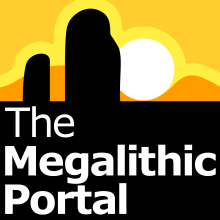English Heritage Archaeologists return to Ancient Site for Further Excavations
Following last year's successful excavation at Farthing Downs Coulsdon in South London, English Heritage experts are teaming up once again with local archaeology enthusiasts to try and make new discoveries about the Iron Age site. The dig, which is part of National Archaeology Week, runs until 23 July.
There have been settlements and human activity on Farthing Downs since the Neolithic era to the seventh century AD. Previous finds have included pottery, flint tools, several axes and a late Bronze Age razor. This year's excavations will concentrate on the Iron Age field system and the Romano-British village that date from second century BC to second century AD.
Earlier this year archaeologists carried out investigations of the Iron Age field system using geo-physics and topographical surveying methods. These methods, seen on Channel 4's Time Team programme, map what is beneath the soil allowing archaeologists to decide where to dig. The archaeologists will investigate the trackway or drove road that runs the length of the Downs and the banks of the fields that lie next to it.
Working alongside the archaeologists from English Heritage and the Museum of London Archaeology Service will be members of the local community and archaeology students. The local volunteers will not just be helping to uncover new artefacts, but will also be trained in survey work so that they can continue to work on the project after the dig is finished.
The area has perplexed and fascinated enthusiasts and experts alike since the 19th century when the antiquarian John Wickham Flower excavated 16 of the barrows (Anglo-Saxon graves that are covered by an earth mound) and removed all of the artefacts that he uncovered. During the Second World War Brian Hope-Taylor, one of the foremost archaeologists of his generation, surveyed the field boundaries of the Iron Age settlement and later excavated a number of the burial mounds and associated graves. But very little research has been carried out since then.
Barry Taylor of English Heritage's Greater London Archaeology Service, who is leading the excavation, said:
"Farthing Downs is one of the most impressive later prehistoric settlement sites that I've worked on. The earth and chalk banks that once formed the tracks and boundaries of the Iron Age landscape are still visible on the ground today, over two thousand years after they were constructed. These remains have fascinated people for centuries and even inspired the local Anglo-Saxon communities to bury their leaders along the line of these ancient earthworks.
"We hope that members of the public will come and see the progress of the dig at this fascinating and ancient site. Archaeologists from English Heritage will be on hand to talk about the history of the area and the excavations."
The work has been planned in partnership with staff from the City of London Corporation and English Nature to ensure that the wonderful flower-rich chalk grassland on the site is protected during the dig.
There will be a guided tour of the site at 2.30pm on Sunday 16 July, starting from the car park. Parking is limited, so people should come by public transport to avoid disappointment. Couldson South station (Redhill & Brighton line) is only a short walk from Farthing Downs.
Farthing Downs is a scheduled ancient monument and Site of Special Scientific Interest (SSSI) owned and managed by the City of London Corporation.
This project is largely resourced by volunteers and funded by English Heritage, with support from the City of London Corporation and English Nature. Post excavation analysis of the artefacts, human remains and environmental material is being undertaken free of charge by the relevant specialists and a programme of scientific dating will be undertaken by the Ancient Monuments Laboratory. A report will be published on the findings later this year.
Source: GNN [and thanks for the zero notice on the press release so I couldn't make it - AB]
Something is not right. This message is just to keep things from messing up down the road
